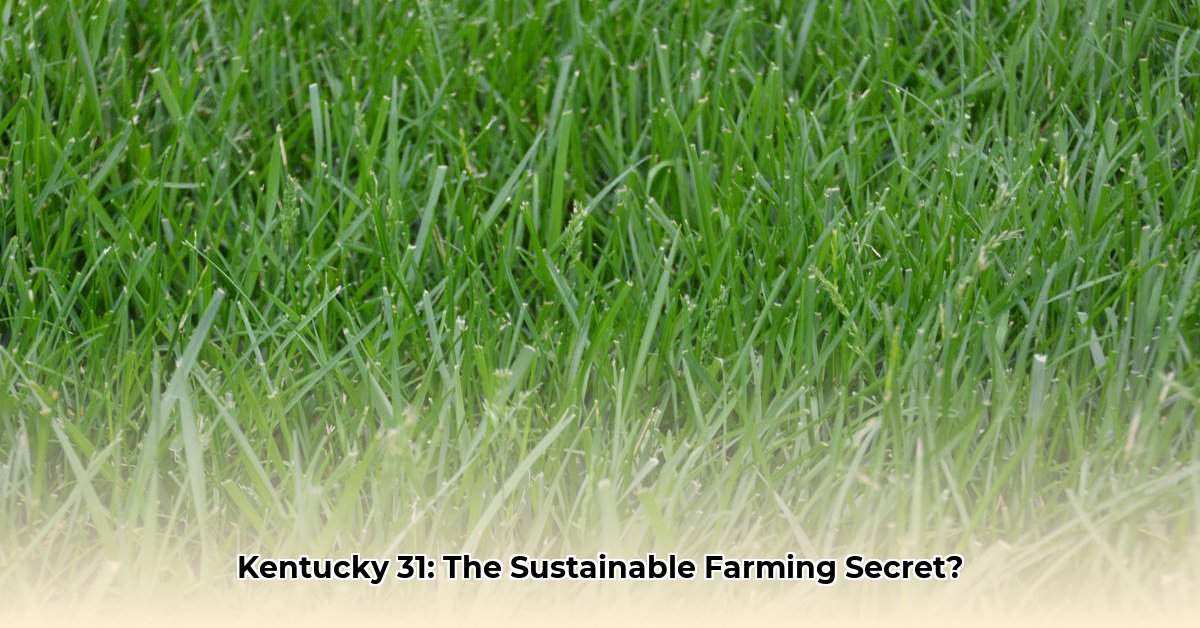
Thinking about using Kentucky 31 (K31) tall fescue seed from Tractor Supply? This popular grass offers drought tolerance and high yields, but understanding its pros and cons is crucial for sustainable farming. This guide provides actionable steps for successful planting and responsible management, acknowledging both the benefits and potential drawbacks of K31. For more on equipment, check out this helpful resource.
Getting Started: Planting Your Kentucky 31
Successful K31 establishment requires careful soil preparation and planting techniques.
Step 1: Soil Preparation
Begin with a soil test to determine pH and nutrient levels. K31 thrives in slightly acidic to neutral soil (pH 6.0-7.0). Amend the soil as needed, using lime to raise pH or sulfur to lower it. Till the soil 4-6 inches deep to create a seedbed. This foundational step ensures optimal root development and reduces the risk of planting failure.
Step 2: Seeding
Use a broadcast spreader to sow 10 pounds of seed per 1000 square feet for even coverage. For smaller areas, hand-scattering is possible, but ensure uniform distribution.
Step 3: Seed Incorporation
Gently rake the seed into the top inch of soil to improve soil contact. This simple step significantly increases germination rates.
Step 4: Watering
Water gently and consistently after planting. Maintain moist soil but avoid waterlogging. Frequent, light watering is preferable to infrequent, deep watering, especially during germination.
Step 5: Post-Planting Care
Monitor growth and fertilize appropriately once the grass is established. Optimal fertilization rates for K31 are still under investigation; soil tests will help guide your approach. Avoid over-fertilization, which can harm the environment and potentially reduce grass health. Over-fertilization leads to nutrient runoff, negatively impacting water quality.
The Two Sides of Kentucky 31: Weighing the Pros and Cons
K31 offers several advantages but also presents challenges that require careful consideration.
Pros:
- Drought Tolerance: K31's deep root system enables it to withstand dry conditions.
- Heat Resistance: It tolerates high temperatures effectively.
- Adaptability: It can grow in various soil types, although a soil test is always recommended.
- Longevity: It's a long-lived perennial, reducing the need for frequent reseeding.
Cons:
- Endophyte Issues: Some K31 strains contain an endophyte fungus that produces toxins harmful to livestock. Choose low-endophyte or endophyte-free varieties if using for animal grazing. Fescue toxicosis, caused by endophyte toxins, can negatively impact livestock health and productivity.
- Biodiversity Concerns: The widespread use of K31 can potentially reduce pasture biodiversity. Consider using grass mixes to improve biodiversity.
- Variable Quality: Seed quality can vary among suppliers and batches. Purchase from reliable sources and check customer reviews.
- Nutrient Management: Research is still underway to determine optimal fertilization strategies.
Sustainable Practices for Long-Term Success
Sustainable K31 management focuses on minimizing environmental impact and maximizing long-term productivity.
- Integrated Pest Management (IPM): Prioritize preventative measures, such as healthy soil management. Use pesticides only when absolutely necessary, opting for environmentally friendly options. Monitoring pest populations is crucial for early intervention. IPM minimizes the environmental impact while controlling pest populations.
- Water Conservation: Efficient irrigation practices, like deep infrequent watering, promote deep root growth and drought tolerance. Water conservation reduces water usage and lowers the environmental footprint.
- Responsible Fertilization: Soil tests guide fertilizer application, preventing excess nutrient runoff. Research into optimal fertilizer rates for K31 is ongoing; stay updated on the latest research. Responsible fertilization minimizes environmental pollution and maximizes resource use efficiency.
Exploring Alternatives: A Broader Perspective
While K31 has its uses, exploring alternative grasses may be beneficial. Diverse grass mixes promote biodiversity and resilience, providing a more sustainable and ecologically balanced pasture ecosystem. Consider researching alternatives suitable for your specific needs. Diversifying forage species creates a more resilient and sustainable pasture system.
The Ongoing Research: Looking Ahead
Further research is vital to fully understand K31's long-term impact:
- Endophyte Strains: Research continues to improve the understanding of various endophyte strains and their effects.
- Soil Health: Long-term effects of K31 on soil health and structure are under investigation.
- Biodiversity: The impact on overall pasture biodiversity requires further study.
- Life Cycle Assessments: A complete environmental footprint assessment is necessary for informed decision-making.
By staying updated on these research efforts, you can make more responsible choices for sustainable pasture management.
Key Takeaways
Successful K31 management involves careful planning, accurate planting techniques, and responsible post-planting care. Ongoing research highlights the importance of considering both the benefits and potential drawbacks, including endophyte issues and biodiversity concerns. Sustainable practices, such as IPM and water conservation, are crucial for minimizing environmental impact and optimizing long-term productivity. Exploring alternative grasses and staying informed on ongoing research contributes to a more sustainable approach to pasture management.